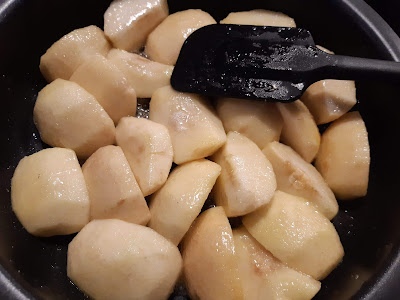Delicious and refreshing veggie pie to make during the summer when courgettes are plentiful. Can be eaten as a main course with a tomato and basil salad or as a side.
Ingredients:
- 6 zucchini medium, shredded
- 1 medium onion, chopped
- 4 eggs
- 200g feta crumbled
- 100g goat's cheese, cubed
- 12 sheets phyllo dough
- 1/2 cup olive oil extra virgin
- 2 T finely chopped parsley
- 2 T finely chopped mint
- Freshly ground pepper
Method:
Preheat the oven to 180°C
Shred the courgette and place in a colander for about an hour to drain.Mildly heat a tablespoon of olive oil in a non-stick pan, add chopped onions and cook until translucent, allow to cool. I've replaced the onion with chopped leek at times when I don't have an onion in sight 😂In a bowl beat the eggs, combine the feta and goat's cheese and season with the pepper.Squeezing the extra excess water from the grated courgettes, place them in a large bowl; add the onions, herbs and eggs/feta mixtureBrush the bottom of baking dish with olive oil; place the first layer of phyllo dough and brush with olive oil; continue until you have 6 layersPour the courgette filling into the phyllo base, cover with a sheet of phyllo, brush with olive oil and continue until you have 6 layers of phyllo dough.Fold over the flaps of the dough, and brush the entire top with olive oil.Using a knife make few holes in the dough.Bake in the centre of the oven for an hour or until the crust is crisp and golden brown. Serve warm
















































